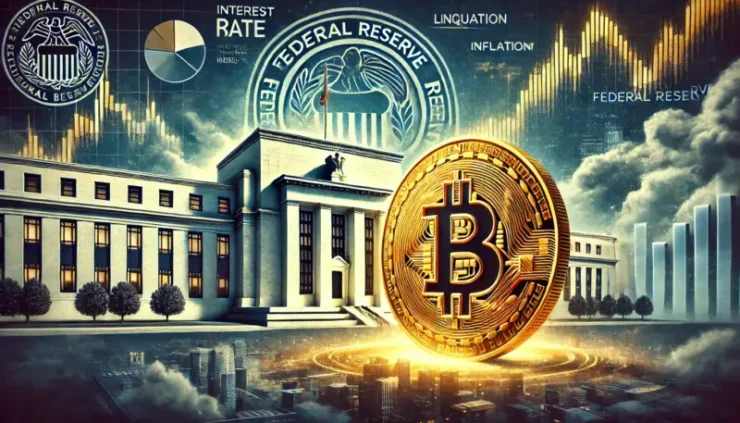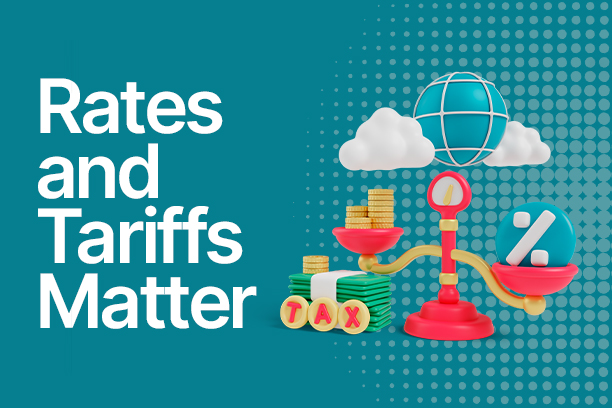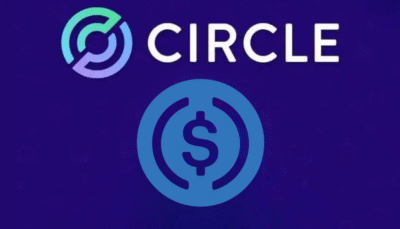For years, crypto enthusiasts have believed that Bitcoin operates independently of traditional financial markets, acting as a hedge against inflation and government interference. However, the harsh reality of today’s market proves otherwise.
The days when crypto was driven purely by retail hype and technological breakthroughs are over. The most powerful forces shaping Bitcoin’s price are interest rates and global economic policies—particularly tariffs.
In one of the episodes of The CoinRock Show, Matthias dissected how macro forces have taken control of the crypto market.
He made it clear that anyone investing in Bitcoin today must understand how central banks and global trade policies impact liquidity and investor sentiment. Ignoring these factors could mean falling into the trap of expecting a bull run that simply won’t materialize under the current conditions.

Federal Reserve Holds the Keys to Bitcoin’s Future
Bitcoin’s explosive bull runs have historically coincided with loose monetary policy and low interest rates. When borrowing is cheap, and liquidity is abundant, investors are more willing to put capital into speculative assets like crypto.
Today, however, the Federal Reserve has taken a drastically different approach. Interest rates are at their highest levels over two decades, and liquidity is drying up.
This tight monetary policy has had a crippling effect on the crypto market.
Bitcoin, which surged past $100K earlier this year, has since struggled to hold above $80K. Trading volumes have declined by over 30%, and institutional investment in Bitcoin has slowed significantly.
Matthias explained why this matters:
“Bitcoin doesn’t move in a vacuum anymore. If interest rates are high and liquidity is scarce, crypto won’t see the kind of massive rallies we saw in previous cycles. It’s that simple.”
This isn’t just speculation—it’s backed by historical data. During the 2020-2021 bull run, the Federal Reserve engaged in massive Quantitative Easing (QE), injecting trillions of dollars into financial markets.
That liquidity flowed into Bitcoin, pushing its price from $10K to nearly $70K in just over a year. Now, with Quantitative Tightening (QT) still in effect, the opposite is happening.
Why Global Trade Policies Are Now Shaping Crypto Markets
While interest rates are the most direct factor affecting liquidity, tariffs are an underestimated threat to the crypto market. The recent wave of tariff increases from the Trump administration is creating instability in global markets, and that uncertainty is spilling over into risk assets like Bitcoin.
Historically, trade wars and tariffs have led to economic slowdowns, higher inflation, and reduced investment in high-risk markets. When capital is tied up in dealing with higher costs of goods and supply chain disruptions, investors pull back from speculative assets.
This is exactly what’s happening in crypto today.
Matthias pointed out the growing influence of government policies on Bitcoin’s price action:
“We used to say Bitcoin was immune to government decisions, but that’s just not true anymore. The more interconnected crypto becomes with traditional finance, the more it reacts to things like tariffs, inflation data, and economic policies.”
Recent trade restrictions have already shown their impact on financial markets. Stock market volatility has increased, and Bitcoin, which often mirrors major indices like the Nasdaq, has struggled to gain momentum.
With more tariffs set to take effect in the coming months, the crypto market could face additional pressure from declining investor confidence.
Crypto Investors Must Pay Attention to Macroeconomics
Many crypto investors still believe that on-chain developments and Bitcoin’s halving cycle are the most important factors in predicting price movements. While these fundamentals still matter, they are no longer the primary drivers of Bitcoin’s price action.
Bitcoin ETFs were expected to be a game-changer, yet macroeconomic conditions overshadowed their impact. Institutional investors who were supposed to flood the market with capital remained cautious due to high interest rates and economic uncertainty.
Even the upcoming Bitcoin halving, a historically bullish event, may not deliver its usual impact if liquidity remains tight.
Matthias emphasized that understanding global finance is now just as important as understanding blockchain technology:
“If you’re serious about making money in crypto, you can’t ignore macro anymore. Knowing what the Fed is doing, watching inflation data, and understanding trade policies—that’s the difference between smart investing and blind gambling.”
Navigating Crypto’s New Reality
For Bitcoin to regain its upward momentum, there needs to be a fundamental shift in macroeconomic conditions. The Federal Reserve would need to lower interest rates, increase liquidity, or signal a more dovish stance on monetary policy. Additionally, if tariff tensions ease and global economic growth stabilizes, investor confidence in risk assets could return.
Until then, Bitcoin is likely to remain trapped in a volatile, sideways market. While long-term holders may see this as an accumulation phase, traders expecting a sudden breakout may be disappointed.
Crypto investing has evolved, and understanding the global economy is no longer optional—it’s essential. The market is now tied to forces beyond the blockchain, and only those who adapt to this new reality will thrive in the long run.





